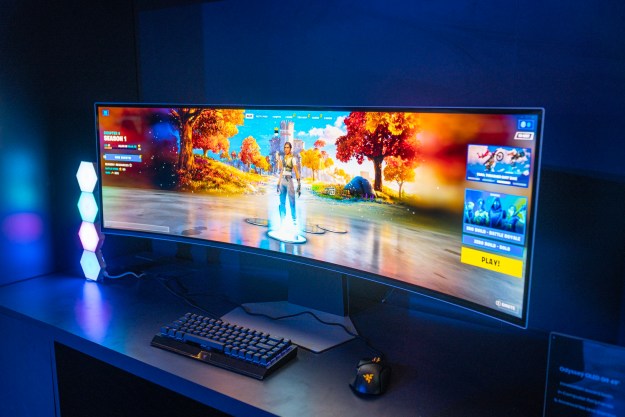Weight is clearly the flagship feature of this year’s Notebook 9. The $1,000 13-inch model features very good, but not quite best-in-class specs across the board, including a 2.3GHz Intel i5 Core processor, 8GB of RAM, a 256 GB solid state drive, and up to 10 hours of battery life. The 13.3-inch 1,920×1,080 LED screen looks sharp, but lacks the sharpness you see in higher-end quad-HD displays. Overall, it’s an impressive every-day machine for users who need enough power to do more than stream Netflix, but aren’t cutting video or playing processor-hungry games on a daily basis.
Samsung also has an arguably more impressive 15-inch model. Though carrying an extra pound — it weighs 2.84 pounds overall — it’s still incredibly light in hand. And with that pound comes some potentially useful upgrades. For $1,200, the 15-inch Notebook 9 has a 2.5GHz Core i7 dual-core, rather than an i5, and a larger battery that reportedly offers 12 hours of battery life.
Picking it up feels more like grabbing a paper notebook than a laptop.
In addition to a bigger battery, the 15-inch model also charges faster. Samsung said the larger Notebook 9 has fast-charging feature that allows users to top off its battery with 2-2.5 hours of battery life in 15-20 minutes, and should charge completely in about 90 minutes. Other than the processor, it offers the same basic specs as the 13-inch model — a 256 GB SSD, 8GB of RAM, and a 1,920×1,080 LED display.
Those of you keeping score out there might notice that the 15-inch model sports stats curiously similar to the 2016 Notebook 9 Pro. (The Pro has a slightly faster 2.6 GHz Core i7 core processor, and the same memory and storage options.) When asked, Samsung said the Notebook 9 Pro was better suited for gamers, specifically pointing to the Pro’s Ultra HD screen and dedicated graphic card, and other users who value power more than mobility. The standard Notebook 9, on the other hand, was primarily designed for work, and its graphics are provided by an Intel IGP.
Despite this, there is reason to believe the 15-inch Notebook 9 may exceed the Pro in one area – hard drive performance. In our review of the Samsung Notebook 9 Pro, editor Matt Smith disliked that Samsung used a third-party solid state drive rather than its own in-house hardware, which led to slower read speeds than competitors with, ironically, a Samsung hard drives. Samsung said both Notebook 9 models sport a Samsung SSD. In fact, when asked how the Notebook 9 would stand out in the Ultrabook market, particularly the Dell XPS 13, a Samsung rep cited the fact that Samsung builds more of its own components than its competitors.
The Notebook 9 also features an extended 180-degree hinge, which allows it to open until the top case lays completely flat on a table. From there, users can activate a screen-sharing app, “presenting” what’s on screen to a friend or co-worker. To that end, you can re-orient the display upside-down with the press of a button to share the screen with someone sitting across from the keys, rather than in front of them. Though it works well — the hinge opens smooth and the screen switches back and forth fast — the feature realistically feels like attempt to satisfy the “custom hinge with extra viewing angles” box on a design trend checklist.
Speaking broadly, consumers who aren’t spec-hounds may find a lot to love in the Notebook 9. At first glance, they appear to be incredibly capable machines that will excel during the trials and tribulations of the day-to-day grind.
If the Notebook 9 can make good on its promise, it will be an enticing option for those who like the idea of dropping their laptop in favor of a tablet or lightweight Chromebook, but can’t bring themselves to pull the trigger because of the functionality they’ll lose in the process.
Both versions of the Samsung Notebook 9 are available now. We’ll let you know how they compare to the competition in a full review soon.
Highs
- Extremely light
- Conventional, but intuitive, design
- 15-inch model charges very fast
- Unlike the Notebook 9 Pro, uses Samsung SSDs
Lows
- Extended hinge feature doesn’t seem that helpful
- No discrete graphics in 15-inch model
Editors' Recommendations
- Best Samsung monitor deals: 4K monitors, ultrawide, and more
- Qualcomm and Samsung are teaming up to fight Apple’s Vision Pro
- Should you wait for the 2023 Samsung Odyssey Neo G9, or buy last year’s model?
- How we test laptops
- Samsung’s Odyssey OLED 49 arrives cheaper than expected



